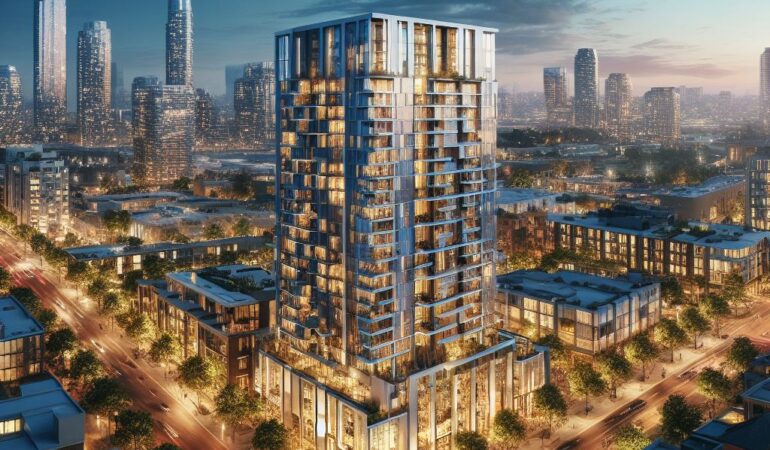Are you ready to make daring moves in apartment real estate location selection?
It’s time to shake things up and take calculated risks.
In this article, we will guide you through the process of assessing emerging neighborhoods, reimagining forgotten urban areas, and embracing mixed-use developments.
By capitalizing on transit-oriented locations and expanding beyond traditional markets, you can maximize your investment potential.
Get ready to step out of your comfort zone and make bold choices that will set you apart in the competitive real estate market.
Key Takeaways
- Expanding beyond traditional markets can lead to higher returns on investment and increased profitability.
- Investing in emerging markets allows for diversification and risk mitigation by avoiding reliance on traditional markets.
- Emerging markets have significant growth potential and can offer opportunities for increased profitability.
- When expanding into emerging markets, it is crucial to conduct thorough market research, assess local regulations and policies, and carefully analyze potential risks and rewards to make informed investment decisions.
Assessing Emerging Neighborhoods
When assessing emerging neighborhoods for apartment real estate location selection, you should consider the potential for growth and development. These neighborhoods often offer unique opportunities for investors and developers to capitalize on the upward trajectory of an area.
One of the crucial factors to evaluate is the presence of key infrastructure and amenities that are necessary for a thriving community. This includes access to transportation networks, such as highways and public transit, as well as proximity to schools, parks, and shopping centers.
Additionally, it’s essential to examine the economic indicators of the neighborhood, such as job growth, income levels, and the presence of major employers. These factors can provide insight into the stability and potential for long-term success of the area.
Another aspect to consider is the current and projected demographics of the neighborhood. Understanding the target market and their preferences can help in tailoring the apartment offerings and amenities to attract tenants.
By carefully assessing these factors and conducting thorough market research, you can make informed decisions about investing in emerging neighborhoods.
This sets the stage for the subsequent section on reimagining forgotten urban areas, where we’ll explore the transformative potential of revitalizing neglected neighborhoods and the benefits it can bring to both investors and the community.
Reimagining Forgotten Urban Areas
To revitalize forgotten urban areas, you need to envision new possibilities and take bold actions. These areas, often characterized by neglected infrastructure and limited economic activity, require innovative strategies that can breathe new life into them. One approach is to reimagine these areas as vibrant, mixed-use neighborhoods that can attract residents and businesses alike.
The first step in reimagining forgotten urban areas is to conduct a comprehensive analysis of the existing conditions. This includes assessing the physical infrastructure, such as buildings, roads, and utilities, as well as understanding the socioeconomic dynamics of the area. By identifying the strengths and weaknesses of the location, you can develop a targeted plan that addresses the specific challenges faced by the neighborhood.
Next, it’s crucial to engage with the community and gather input from local stakeholders. This collaborative approach ensures that any revitalization efforts are aligned with the needs and aspirations of the residents. By involving the community in the decision-making process, you can build trust and create a sense of ownership, leading to greater support for the revitalization project.
In addition to engaging the community, it’s essential to attract private investment to the area. This can be achieved by offering incentives and tax breaks to developers and businesses willing to invest in the neighborhood. By creating a favorable investment climate, you can encourage the development of housing, retail spaces, and amenities that will attract people back to the area.
Embracing Mixed-Use Developments
To embrace mixed-use developments and revitalize forgotten urban areas, you must actively engage with the community and attract private investment. This approach allows for the creation of vibrant, sustainable neighborhoods that meet the diverse needs of residents and businesses. Here are four key strategies to successfully embrace mixed-use developments:
- Foster Collaboration: Engage with local stakeholders, including residents, businesses, and community organizations, to understand their needs and desires for the area. This collaborative approach ensures that the development aligns with the community’s vision and values.
- Create a Sense of Place: Design the development to reflect the unique character and identity of the neighborhood. Incorporate elements such as public spaces, green areas, and cultural amenities to create a vibrant and inviting atmosphere.
- Encourage Economic Growth: Attract private investment by highlighting the potential for business opportunities and economic development within the mixed-use development. This can include offering incentives and tax breaks to entice businesses to invest in the area.
- Prioritize Sustainability: Incorporate sustainable design principles into the development, such as energy-efficient buildings, green infrastructure, and public transportation options. This not only reduces the environmental impact but also adds value to the development and attracts environmentally conscious residents and businesses.
By embracing mixed-use developments and implementing these strategies, you can revitalize forgotten urban areas and create thriving communities.
Transitioning into the subsequent section about capitalizing on transit-oriented locations, you can further enhance the accessibility and connectivity of the development, fostering a more sustainable and efficient urban environment.
Capitalizing on Transit-Oriented Locations
To maximize your success in apartment real estate location selection, regularly capitalize on transit-oriented locations. Transit-oriented locations refer to areas that are designed with convenient access to public transportation, such as subway stations, bus stops, and train stations. These locations have become increasingly popular among renters, as they offer the convenience of easy commuting and reduced reliance on private vehicles.
When selecting a transit-oriented location for your apartment real estate investment, it’s crucial to consider factors such as proximity to transportation hubs, frequency and reliability of public transportation options, and the overall accessibility of the area. Properties located within walking distance of transit stations, for example, tend to attract a larger pool of potential tenants who rely on public transportation for their daily commute.
Moreover, transit-oriented locations often experience higher demand and rental rates compared to areas without convenient transit access. This is because renters value the time and cost savings associated with living in such locations. Additionally, these areas tend to have a vibrant and lively atmosphere, with a variety of amenities and services within walking distance, further enhancing their appeal.
By regularly capitalizing on transit-oriented locations, you can increase the attractiveness and marketability of your apartment real estate investment. This strategic approach allows you to tap into a growing demographic of renters who prioritize convenience and accessibility.
Expanding beyond traditional markets will be the next step in your journey towards success in apartment real estate location selection.
Expanding Beyond Traditional Markets
Consider exploring new and emerging markets to expand your reach in apartment real estate location selection. Expanding beyond traditional markets can provide you with new opportunities for growth and profitability. Here are four reasons why you should consider venturing into new markets:
- Increased demand: Traditional markets may be saturated, making it challenging to find suitable locations. By exploring new markets, you can tap into untapped demand and cater to a new set of customers. Conduct thorough research to identify markets with growing populations, strong job markets, and favorable economic conditions.
- Lower competition: Traditional markets often attract numerous investors, leading to increased competition and higher property prices. In contrast, emerging markets may have fewer investors, allowing you to secure properties at more favorable prices. This can lead to higher returns on investment and increased profitability.
- Diversification: Expanding into new markets allows you to diversify your portfolio and mitigate risks associated with solely relying on traditional markets. By investing in different locations, you can spread your risk and protect yourself from potential downturns in specific markets.
- Market potential: Emerging markets often offer significant growth potential. With proper research and due diligence, you can identify markets that are on the cusp of development and invest in areas that will experience rapid growth in the future.
Expanding beyond traditional markets requires careful consideration and analysis. Conduct thorough market research, assess local regulations and policies, and evaluate the potential risks and rewards before making any investment decisions.
Frequently Asked Questions
How Can I Determine if an Emerging Neighborhood Is a Good Investment Opportunity for Apartment Real Estate?
To determine if an emerging neighborhood is a good investment opportunity for apartment real estate, consider factors such as job growth, infrastructure development, population trends, and market demand. Research local economic indicators and consult with industry professionals for informed decision-making.
What Strategies Can Be Employed to Revitalize Forgotten Urban Areas for Apartment Real Estate Development?
To revitalize forgotten urban areas for apartment real estate development, consider strategies like infrastructure improvements, public-private partnerships, and community engagement. These tactics can breathe new life into neglected neighborhoods, attracting investors and fostering economic growth.
How Do Mixed-Use Developments Impact the Value and Desirability of Apartment Real Estate in a Particular Location?
Mixed-use developments can have a significant impact on the value and desirability of apartment real estate in a particular location. They create a vibrant and dynamic environment, attracting residents and businesses, thus increasing demand and property values.
What Factors Should Be Considered When Evaluating the Potential of a Transit-Oriented Location for Apartment Real Estate Investments?
When evaluating the potential of a transit-oriented location for apartment real estate investments, consider factors like proximity to public transportation, walkability, and access to amenities. These factors can greatly impact the desirability and value of the property.
What Are the Key Considerations and Challenges Involved in Expanding Into Non-Traditional Markets for Apartment Real Estate Development?
When expanding into non-traditional markets for apartment real estate development, you need to consider the key considerations and challenges involved. This includes analyzing market demand, understanding local regulations, and assessing infrastructure limitations.




